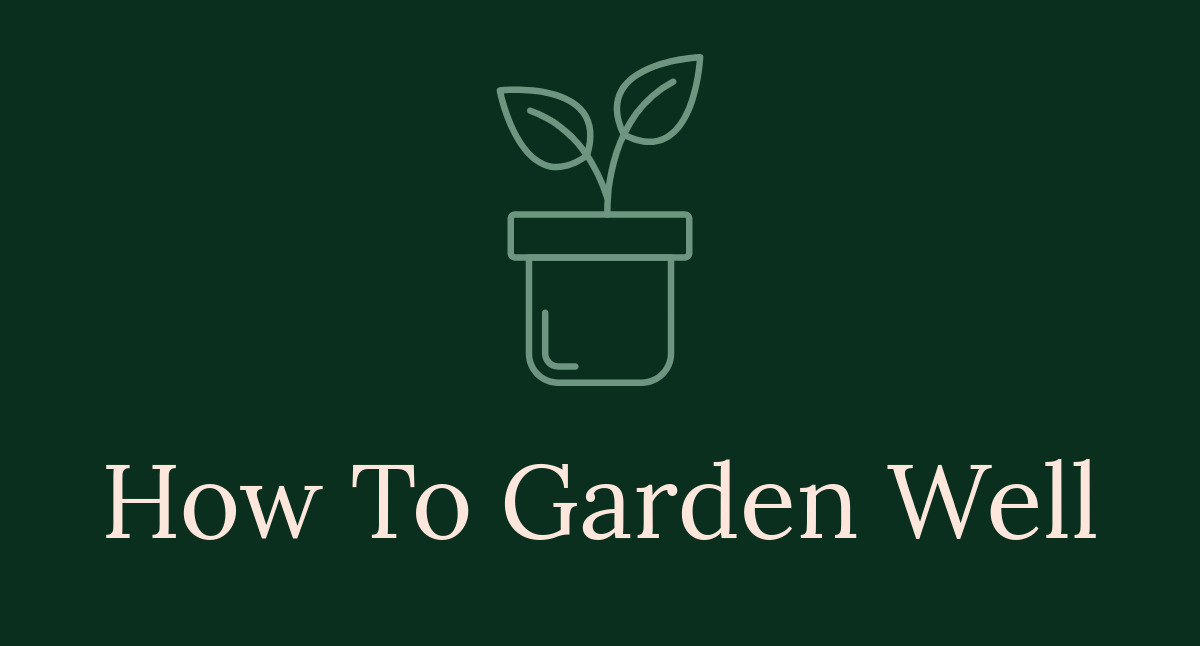

Creating a Sensory Garden for Children: A Comprehensive Guide
Introduction
Creating a sensory garden for children is like crafting a magical outdoor adventure that tickles their senses and sparks their curiosity. Imagine a vibrant space filled with fragrant herbs, colorful flowers, and textured plants that invite little hands to touch, smell, and taste. This guide will help you design a sensory garden that not only captivates children but also promotes their emotional and cognitive development. With thoughtful planning and a splash of creativity, your garden can become a haven of exploration and learning. Think about how a child feels running through a patch of tall sunflowers or squeezing the leaves of mint. Sensory gardens are not just for play; they provide valuable experiences that help children connect with nature. As you embark on this journey, remember to involve your little ones in the process. Let them choose plants, help with planting, and engage with the garden regularly. Creating a sensory garden is an opportunity to bond, learn, and cultivate a love for nature. So, grab your gardening gloves and let’s dig into the world of sensory gardening!
Summary
In this guide, we will explore the fascinating world of sensory gardens and how they can benefit children. A sensory garden is designed to engage all five senses: sight, smell, sound, touch, and taste, providing a rich, immersive experience that nurtures curiosity and creativity. Understanding sensory gardens is crucial. They serve a purpose in fostering sensory engagement for children. By incorporating various elements, these gardens enhance emotional regulation and physical activity. Children with sensory processing issues or disabilities can particularly benefit from these spaces. Design principles are essential. Consider accessibility, usability, and comfort to ensure your garden is inviting for all children. Choosing the right plants is vital. Select varieties that engage each sense while ensuring safety and ease of maintenance. Interactive features, such as water features or sound installations, encourage exploration and play. Safety considerations cannot be overlooked. Avoid harmful plants and ensure your garden is accessible for everyone. By the end of this guide, you will have a comprehensive understanding of how to create a sensory garden that delights children’s senses and promotes their well-being, while providing countless opportunities for learning and play.
Section 1: What is a Sensory Garden?
A sensory garden is a specially designed outdoor space that ignites the five senses: sight, smell, sound, touch, and taste. Unlike conventional gardens, sensory gardens invite children to explore and interact with their environment. The ultimate goal is to create a rich, immersive experience that promotes learning and emotional growth. These gardens offer an opportunity to engage with nature while providing therapeutic benefits for children. Sensory gardens play a crucial role in education and emotional development. They help children grasp concepts through hands-on experiences. Kids can learn about colors, textures, and scents while nurturing their curiosity. This type of garden serves as a natural classroom where exploration is encouraged. As children connect with their surroundings, they build confidence and improve their cognitive skills. The benefits of sensory gardens extend far beyond mere enjoyment. They enhance sensory perception, allowing children to sharpen their senses. When kids interact with different textures and scents, they learn to identify and appreciate the world around them. Furthermore, these gardens promote emotional regulation. Engaging with nature can help reduce anxiety and improve mood, making it a soothing sanctuary for children. Physical activity is another significant advantage of sensory gardens. Children are naturally drawn to explore, climb, and play. Sensory gardens provide an inviting space for exercise, helping kids develop coordination and motor skills. This active engagement fosters a love for outdoor play, which is essential in today’s digital age. Sensory gardens cater to a diverse range of children, including those with sensory processing issues or disabilities. These spaces create an inclusive environment where every child feels welcome. For kids on the autism spectrum, sensory gardens offer a safe place to explore and process their feelings. With thoughtful design, sensory gardens can be tailored to accommodate various needs, ensuring that all children can experience the joys of nature. In summary, sensory gardens are more than just beautiful landscapes. They are dynamic spaces that foster growth, learning, and emotional well-being for children of all abilities. Whether you’re a parent or educator, creating a sensory garden can provide countless benefits for the little ones in your life.
Section 3: Choosing the Right Plants
Creating a sensory garden for children is all about engaging their senses. Plants play a crucial role in this experience. Let’s explore the best options for each sense!Plants for Sight
Colorful Flowers The eyes love a vibrant display! Choose plants that burst with color. Here are some fantastic options:- Sunflowers: These towering beauties can reach up to ten feet tall! Their bright yellow faces follow the sun, captivating children as they sway in the breeze.
- Zinnias: Available in a rainbow of colors, zinnias are perfect for little hands to pick. They bloom all summer long and attract butterflies, adding movement and life to your garden.
- Bleeding Hearts: These whimsical flowers resemble tiny hearts dangling from graceful stems. Their unique shape and soft pink color are sure to spark curiosity among children.

Plants for Smell
Fragrant Herbs and Flowers A sensory garden should smell as delightful as it looks. Here are some aromatic plants that will enchant children:- Lavender: This calming herb not only smells heavenly but also attracts pollinators. Kids can enjoy rubbing the leaves and inhaling the soothing scent.
- Mint: Perfect for little gardeners, mint offers a refreshing aroma. Kids can crush the leaves between their fingers for an invigorating experience.
- Sweet Peas: These charming flowers are not only visually appealing but also release a delightful fragrance. Their scent can evoke memories of sunny days in the garden.

Plants for Touch
Textured Plants Touch is a vital sense for children. Including plants with interesting textures can enhance their exploration:- Lamb’s Ear: With its soft, fuzzy leaves, lamb’s ear invites children to touch and feel. It’s a sturdy plant that thrives in various conditions.
- Moss: This lush green carpet is perfect for creating a soft, inviting area. Kids will love to explore its unique texture with their bare feet.
- Ferns: The delicate fronds of ferns offer a contrast to sturdier plants. Their feathery leaves provide a delightful tactile experience.

Plants for Sound
Sound-Producing Plants Engaging children’s ears can be just as important as their eyes and hands. Consider these sound-producing plants:- Bamboo: This tall grass makes a soothing rustling sound when the wind blows. Kids will enjoy listening to its gentle whispers as they play nearby.
- Ornamental Grasses: Plants like switchgrass create a lovely rustling sound in the breeze. They add movement and sound to your garden, keeping kids engaged.
- Balloon Flower: When squeezed, its inflated buds produce a fun popping sound. This playful plant invites tactile exploration while adding auditory excitement.

Plants for Taste
Edible Plants A sensory garden wouldn’t be complete without plants that tantalize the taste buds! Here are some safe edible options:- Strawberries: Nothing beats the thrill of picking sweet strawberries! These gems are easy to grow and provide a delicious reward for young gardeners.
- Chives: These mild onion-flavored herbs are perfect for little chefs. Kids can munch on the fresh greens and enjoy their vibrant purple flowers.
- Nasturtiums: Edible and colorful, nasturtiums add a peppery flavor to salads. Their bright blooms can also attract beneficial insects to your garden.

Section 4: Creating Interactive Features
Creating a sensory garden for children is all about enhancing their experience through interactive features. These elements engage their senses, making the garden a lively space for exploration and play. Let’s look at how you can incorporate water features, musical instruments, and art into your sensory garden.
Water Features
Water features are a fantastic way to engage the senses of sound and touch. Consider adding a small fountain or a pond to your garden. The gentle trickle of water creates a calming atmosphere, perfect for relaxation. Children will love splashing their hands in the fountain and feeling the cool water on a warm day. If space allows, a small pond can be a delightful addition. It attracts wildlife, such as frogs and dragonflies, adding an element of surprise. Encourage kids to observe these creatures as they hop and flit about. Plus, you can introduce water plants like water lilies or floating ferns. Their vibrant colors and textures make it visually appealing while also offering educational opportunities about ecosystems. For an even more interactive experience, consider a water wall. This feature allows children to play with the flow of water, creating both sound and tactile experiences. They can watch the water cascade down and even try to catch it with their hands. Just imagine their giggles as they splash around!
Musical Instruments
Adding musical instruments to your sensory garden can spark creativity and joy. Outdoor instruments, such as wind chimes, colorful xylophones, or hand drums, invite children to make music while exploring nature. They can experiment with different sounds, rhythms, and melodies, encouraging auditory exploration. Consider installing wind chimes made from bamboo or metal. The soft tinkling sounds create a peaceful ambiance, while children can enjoy listening to the wind’s music as it flows through. Xylophones, made from colorful, weather-resistant materials, can provide a visual treat and auditory delight. Children can strike the bars to create cheerful tunes, fostering a sense of accomplishment. For a more immersive experience, you can build a sound garden with a variety of instruments. Include simple percussion items, like tambourines or kinetic garden sculptures that kids can easily play. This allows for group play and social interaction, enhancing their emotional and social development.
Garden Art and Sculptures
Art can significantly enhance the sensory experience in the garden. Incorporating sculptures and colorful art pieces gives children something to marvel at and engage with visually. Choose whimsical shapes, bright colors, or even interactive art that encourages kids to touch and explore. Consider adding a mosaic path or painted stones throughout the garden. Each stone can feature different textures and designs, enticing little fingers to explore. You could also include sculptures that represent animals or plants, sparking curiosity and imaginative play. Additionally, you can introduce garden art supplies to engage their creativity further. Another fun idea is to include garden art that moves. Kinetic sculptures can sway in the wind, creating captivating visual displays. Children will love watching them dance and spin, adding a playful element to the sensory experience. Additionally, consider incorporating a chalkboard for outdoor use or a whiteboard for outdoor use. This allows children to express their creativity through drawing and writing. They can leave messages, create art, or jot down their observations, making the garden an ever-evolving space. In summary, interactive features like water elements, musical instruments, and garden art make sensory gardens vibrant and engaging. They invite children to explore, play, and connect with their surroundings. By incorporating these elements, you create a magical space that delights all their senses while fostering learning and creativity.
Section 5: Safety Considerations
Creating a sensory garden is an adventure, but safety is key. Here’s how to ensure the space is secure for your little explorers.Avoiding Toxic Plants
Selecting non-toxic plants is crucial. Here are some plants to avoid, along with safe alternatives:- Avoid:
- Foxglove: Beautiful but highly toxic.
- Wisteria: Gorgeous blooms but toxic seeds.
- Lantana: Can cause skin irritation and toxicity if ingested.
- Safe Alternatives:
- Sunflowers: Bright and cheerful, perfect for kids.
- Marigolds: Not only pretty but also deter pests.
- Basil: Delicious and safe to taste!

Creating Boundaries
Establishing clear boundaries helps maintain a safe and enjoyable garden experience. Here are some tips:- Define Zones: Use paths or raised beds to create clear areas. This helps children understand where to play and explore.
- Use Signs: Add colorful signs to indicate which plants are safe to touch or taste. This encourages responsible interaction.
- Supervision: Always keep an eye on the little ones as they explore. Encourage group play to foster a sense of community while maintaining safety.
- Set Rules: Teach children to gently interact with plants, avoiding rough handling. Remind them not to pick too many flowers, allowing others to enjoy them too!

Conclusion
Creating a sensory garden for children is not just about planting flowers; it’s about cultivating an environment where exploration and learning thrive. By engaging all five senses, you can foster a deep appreciation for nature, enhance emotional well-being, and spark creativity in young minds. Whether you have a large backyard or a small balcony, there is always an opportunity to create a sensory haven for children. Embrace the journey, and watch as your garden transforms into a magical space filled with wonder and discovery.Please let us know what you think about our content by leaving a comment down below!
Thank you for reading till here 🙂
All images from Pexels



